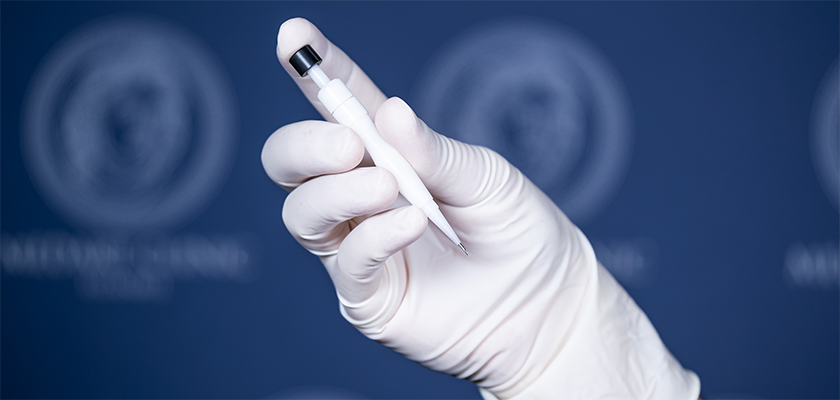DHI (Direct Hair Implantation) hair transplant is the most advanced hair implantation method, where the extracted hair follicles are implanted in the recipient area with a specialized needle tip pen tool instead of making incisions. DHI hair transplant is the most expensive hair transplant method, with an average cost of $10,000 to $15,000 in the US. The success rate of DHI hair transplants can reach above 95%, and they have excellent recovery time with almost invisible scarring at the recipient area.
DHI hair transplants can restore hair, beards, and eyebrows and work for all genders and most hair types. The specialized Choi pen implanter allows the surgeon to implant even single follicles without trauma at a precise angle and depth. DHI hair transplants heal faster than other hair transplant methods and leave almost undetectable scars at the recipient area. The full results of the procedure can be seen 12-18 months after the operation, and the results are permanent.
Key points:
- DHI hair transplant is the most advanced hair transplant technique
- DHI hair transplant costs vary from $2,000 to $30,000 depending on the country
- DHI hair transplant success rate is above 90%
- 4500 grafts can be implanted in a single DHI hair transplant session
- The DHI hair transplant procedure takes 5-7 hours
- No-shave DHI option is available
- Works for scalp hair, beards, eyebrows, body hair, and most hair types
What is a hair transplant?
A hair transplant is a surgical procedure that moves individual hair follicles from areas resistant to balding (donor site) to areas experiencing hair loss (recipient site) on a patient’s scalp. The procedure falls under reconstructive plastic surgery and provides a permanent solution for various types of hair loss.
What is DHI hair transplant?
DHI (Direct Hair Implantation) hair transplant is a refined hair implantation technique that uses a specialized pen-like tool called a Choi implanter to directly place hair follicles into the scalp without pre-making recipient sites. This method offers precise control over the angle, depth, and direction of implanted hairs.
The correct way to classify DHI hair transplant is as a “hair implantation method” rather than a “hair transplant technique.” Follicular units used during the DHI hair transplant can be harvested using the FUE or FUT method, which are actual hair transplant techniques. The grafts are then implanted into the recipient area with pre-made incisions using dull implanters or with sharp implanters (Choi pen), creating an incision and implanting the hair simultaneously.
For the purposes of this article, we will call the direct hair implantation “DHI hair transplant” to avoid confusion as the general public recognizes this name.
How much does DHI hair transplant cost?
DHI hair transplants cost between $2000 and $30,000, depending on the country. In Western countries such as the USA, the UK, Germany, and France, the average cost is around $10,000 to $15,000. In eastern countries such as Turkey, DHI hair transplants cost around $3000 to $4000 on average.
Why is DHI hair transplant so expensive?
DHI hair transplants are more expensive than other techniques because they are the most advanced form of hair transplant available, use more specialized tools, and require more expertise from the surgeon.
What is the success rate of DHI hair transplant?
The success rate of DHI hair transplant with single follicle and two follicle grafts is 92% survival at 6 months and 90.4% survival at 12 months, according to research from the Department of Immunology, Kyungpook National University School of Medicine, where the DHI technique was invented.
A subsequent study by the same team found that the density of 20 single follicle grafts implanted in a 1cm² area had a survival rate of 95.06%, and 30 follicles had a survival rate of 90.84%. 30 follicles per 1cm² provided the best density and survival rate ratio. The survival rates decreased significantly with 40 and 50 hair follicles, down to 76.48%.
In addition to the density of the implantation, the success rate of a DHI hair transplant depends on many factors, such as trauma to the follicles, the number of follicles in a graft, the time between extraction and implantation, the surgeon’s skill, and the quality of the donor hair.
How does DHI hair transplant work?
DHI hair transplant works through a two-step process of extraction and direct implantation. First, modified micro-motor extractors extract individual follicular units from the donor area. Then, these grafts are loaded into the Choi implanter pen and immediately implanted into the recipient area without creating prior incisions.
The Choi implanter works similarly to a punch needle. It allows the surgeon to create a channel with a needle and implant the hair simultaneously. Choi pens allow the implantation of a single hair follicle without damaging the hair follicle or causing excessive trauma to the recipient area.
The DHI hair transplant process follows these steps:
- Pre-op tests, hair and scalp analysis
- Hairline design
- Shaving the hair (depending on the patient)
- Local anesthesia administration
- Follicular unit extraction from the donor area
- Graft preparation and sorting
- Loading grafts into Choi pens
- Direct hair implantation into the recipient area
- Recovery and post-op instructions
- First wash and healing
How long does a DHI hair transplant take?
A DHI hair transplant takes about 5-7 hours on average. The duration may vary depending on the number of grafts that need to be extracted and prepared and the size of the recipient area.
Can DHI hair transplant be done with body hair?
Yes, a DHI hair transplant to the head and other parts of the body can be done with beard hair and chest hair.
Does DHI work for beard transplants?
Yes, a DHI hair transplant can work for beard transplants. The DHI technique is particularly effective for beard transplants since it works best with single hair follicles and leaves almost invisible scars in the recipient area.
Does DHI work for eyebrow transplants?
Yes, a DHI hair transplant can work for eyebrow transplants. Eyebrow transplants require precise single follicle implantation at very precise angles, and a proto-DHI technique was first used for eyebrow reconstructions in the 60’s.
What is a Choi pen?
A Choi pen is a specialized surgical instrument (sharp implanter) used in Direct Hair Implantation (DHI) procedures that allows the surgeon to make an incision and implant a single hair follicle simultaneously. The Choi pen consists of a loading chamber, plunger mechanism, and needle tip ranging from 0.8-1.0mm in diameter. The Choi pen allows surgeons to control three critical aspects of follicle placement: depth, angle, and direction of implanted grafts.
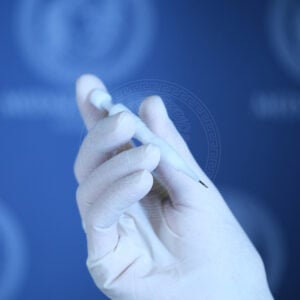
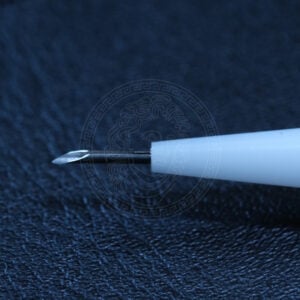
The Choi pen was developed by Dr. Yung Chul Choi and Dr. Jung Chul Kim in Korea and was first manufactured by Akio Kakinuma in 1992. In their groundbreaking paper, Single Hair Transplantation Using the Choi Hair Transplanter, the pair invented the Choi pen and developed and used the modern DHI hair transplant technique for the first time to achieve single hair follicle transplantation. The pair was able to reconstruct hairlines, eyebrows, facial hair, and burn scars.
The Choi pen was inspired by a single implanter pen developed in the 1960s by medical assistant Chung Ki Paek, which was used to perform eyebrow reconstructions. Today, multiple hair transplant implanter pens exist, such as the Hwang pen, KNU pen, OKT pen, and Smart Hair pen, and the Choi pen is the most popular and the oldest among them.
What size Choi pen is used in DHI hair transplant?
The size of the Choi pen used in DHI hair transplant is between an internal diameter of 0.6 to 0.8 mm and an outer diameter of 0.8mm to 1.2mm, depending on the pen size and brand.
How deep are DHI hair implants placed with the Choi pen?
Hairs implanted with the DHI procedure are implanted 5mm deep into the scalp on average, but this can change depending on the patient’s scalp condition.
How many Choi pens are used during DHI hair transplant?
On average, 5 to 6 individual Choi pens are used during a DHI hair transplant.
Can DHI hair transplant be combined with other hair transplant techniques?
Yes, DHI hair transplant can be combined with other hair transplant techniques, such as Sapphire FUE. Combining DHI and Sapphire FUE techniques in what is marketed a Hybrid Hair Transplant procedure can allow surgeons to achieve extraordinarily natural and transformative results.
What makes DHI hair transplant different from other hair transplant techniques?
DHI differs from traditional techniques in that it eliminates the need to make recipient site incisions before implantation. The specialized Choi pen creates the site and places the graft in one smooth motion, allowing for:
- More precise control over placement
- Less trauma to surrounding tissue
- Faster healing time
- Denser packing of grafts
- Option for no-shave procedures
We must remind our patients that DHI is a hair implantation method, not a follicle harvesting method such as FUR or FUT.
DHI hair transplant vs Sapphire FUE hair transplant
DHI and Sapphire FUE differ primarily in their implantation techniques and surgical tools. DHI uses a Choi implanter pen that creates recipient sites, and places grafts simultaneously, almost like a punch needle. In contrast, Sapphire FUE uses sapphire blades to create recipient sites before manual graft placement.
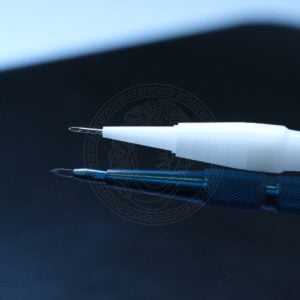
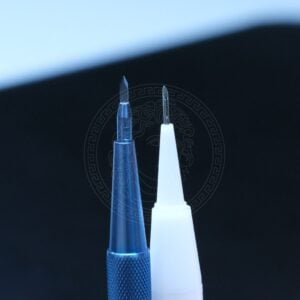
Another difference is that DHI can be performed without shaving the recipient area, while Sapphire FUE may require shaving. Due to equipment costs, DHI can cost slightly more than the Sapphire FUE technique. DHI also has a lower maximum graft cap compared to Sapphire FUE.
DHI and Sapphire FUE have similar success rates, excellent placement control, minimal scar appearance at the recipient area, minimal downtime, and provide natural results. The final choice of technique depends on what works best for your hair type, hair loss pattern, and its extent.
DHI hair transplant vs FUE hair transplant
The differences between DHI and FUE is that FUE is a hair extraction method for hair transplants, while DHI is a hair implantation technique. With FUE, hair follicles from the donor area are harvested with micro punches and can be implanted in the recipient area with forceps or implanter pens. When implanter pens are used, it’s called “direct hair implantation.” Direct hair implantation can be performed after the grafts are extracted with the FUE or the FUT method.
The regular FUE technique performed with stainless steel scalpels won’t be able to provide comparable results to DHI.Regular FUE hair transplants have a higher risk of bleeding and can take longer to heal compared to DHI. Because the regular FUE method does not require special equipment, it is more affordable. However, with the advancement of Sapphire technology, most clinics no longer perform FUE with steel scalpels, and it might be harder to find a clinic.
How does DHI hair transplant compare to FUT hair transplant?
DHI hair transplant is a hair implantation method, while FUT is a graft harvesting technique. DHI can be performed with grafts harvested with the FUE or FUT technique, but the FUE method is more common when DHI is used.
The Follicular Unit Extraction method extracts individual follicles using motorized extractors, while FUT removes an entire strip of scalp (15-25cm) from the donor area. While FUT leaves a linear scar, combining DHI and FUE results in small, circular scars dispersed in the donor area.
This fundamental difference significantly affects recovery time, with DHI with FUE patients recovering in 7-10 days compared to FUT’s 2-3 weeks. The techniques also differ substantially in cost and graft survival rates.
What is the maximum number of grafts possible with DHI hair transplant?
The maximum number of grafts possible to implant in a single DHI hair transplant session is 4500. Implanting over 4500 grafts poses risks of poor results due to a longer time between extraction and implantation and overpacking the follicles.
How are DHI hair transplant grafts counted?
DHI hair grafts are counted as single follicle grafts, 2 follicle grafts, and 3 follicle grafts. As a result, the total number of hair follicles implanted is higher. While single follicle grafts are used in refined hairline designs, 2 and 3 follicle grafts are used to increase density further back.
How is donor area capacity calculated for DHI hair transplant?
The donor area capacity for DHI hair transplant is calculated during a hair and scalp analysis before the operation, where the scalp is microscopically analyzed to evaluate the condition of the donor hair and the exact amount of viable donor hair.
How is the hairline designed for DHI hair transplant?
The hairline design for DHI hair transplant is a two-step process. Before surgery, a natural hairline is drawn onto the patient’s scalp as a guide based on their natural features and desired results. Single grafts are prepared and implanted at a specific angle to construct the hairline during surgery.
Who is a good candidate for DHI hair transplant?
You are a good candidate for a DHI hair transplant if you:
- Still have a hairline (Sapphire FUE works better for hairline reconstruction)
- Are between the ages of 18-65
- Have an established hair loss pattern (Norwood scale 2-6 for men &Ludwig scale 1-2 for women)
- Have sufficient donor hair density, in good condition
- In overall good health
Do you need to shave your hair for DHI hair transplant?
You don’t need to shave the recipient area for DHI hair transplant, but you do need to shave the donor area. The recipient area does not require shaving because no linear incisions need to be made in the donor area when using a Choi oen. The donor area must be shaven because the hair follicles should be short enough to insert safely into the implanter pen.
What is the best age for DHI hair transplant?
The best age for DHI hair transplant is between 25 and 60. Between 25 and 60, most people have an established hair loss pattern suited for hair transplant operations.
Which hair loss types can DHI hair transplant work for?
DHI hair transplant can work for restoring your hair if you have the following hair loss types:
- Receding sideburns
- Receding temples
- Hair loss on the crown
- Failed hair transplant
- Hair transplant scarring
- Scarred scalp
- Fibrosing Alopecia (depending on condition)
- Alopecia Areate (if did not respond to treatment in the first year)
- Traction Alopecia (if the hair loss is permanent)
Does DHI hair transplant work for curly hair?
DHI hair transplant can work for curly hair if the extraction from the donor area is done correctly to account for the curly hair follicles; they can be safely implanted with the DHI method.
In our experience, the part that can go wrong in curly hair transplants is the extraction of the curly hair follicle, which sits at an angle. If the curly hair follicle is extracted correctly, it can be implanted with a DHI pen, and the same angle can be replicated on the recipient area. Some surgeons can avoid performing DHI on 4a, 4b, and 4c hair types with the DHI method, primarily due to a lack of experience with extracting curly hair types.
Does DHI hair transplant work for women?
Yes, DHI hair transplants work for women. Women usually opt for DHI hair transplants around their foreheads because it does not require shaving of the recipient area. In addition to hair transplants, the DHI technique is popular among women for eyebrow restoration.
Can DHI hair transplant be done with thin donor hair?
Thin donor hair is not recommended for DHI hair transplant as it can have a low survival rate and not provide satisfactory results.
What are the alternatives to DHI hair transplant if it is not for you?
The best alternative to a DHI hair transplant is a Sapphire FUE hair transplant. Both DHI and Sapphire FUE are the most advanced hair transplant techniques, having similar costs, minimal downtime and natural yet dramatic results.
What should you do before a DHI hair transplant?
Before DHI hair transplant, stop taking medications as directed by your doctor, and avoid smoking, alcohol, or illicit substances for at least 2 days, preferably 2 weeks before the procedure.
Discontinue Finasteride for 7 days and Minoxidil for 10 days before DHI hair transplant. Additionally, consult your doctor about the possibility of stopping blood thinners 7 days before your surgery.
How to find the best DHI hair transplant clinic?
When selecting a DHI hair transplant clinic, start by verifying their certifications, DHI-specific experience, and success rates. Research thoroughly by examining organic reviews across platforms like Google, TrustPilot, and Reddit, paying particular attention to before/after photos of patients with hair loss patterns similar to yours.
Choose a clinic that maintains transparency about costs, offers comprehensive packages, and performs a limited number of procedures daily to ensure quality. The surgeon should be actively involved in the process, provide detailed treatment plans, and maintain clear policies regarding emergencies and unsatisfactory results.
Ensure they offer proper aftercare support and avoid facilities promoting outdated techniques or unrealistic promises. Consider consulting multiple providers before making your final decision.
What questions to ask during a DHI hair transplant consultation?
You can ask these questions during a DHI hair transplant consultation to see if DHI is a good method for you:
“Do I have enough good quality donor hair?”
“How many grafts can be safely extracted from my donor area before it starts to look sparse?”
“Will I need multiple sessions to achieve my desired result?”
“Based on my scalp characteristics, what complications am I most at risk for?”
What should you avoid after a DHI hair transplant?
After DHI hair transplant, avoid smoking for at least two weeks and caffeine for two days. Stay out of the sun for two months and limit excessively salty or spicy foods to help reduce inflammation. Refrain from physical activity, exercise, and going to the gym for a month, and use a neck pillow while sleeping to keep your head elevated.
For 10 days post-surgery, wash your head and body separately, avoid sweating, and do not shave the recipient area. Wear loose clothing like button-ups to prevent contact with your scalp, and avoid hair dye for 6 months.
What is the recovery process after DHI hair transplant?
During the recovery process after DHI hair transplant, minimal activity is recommended with an elevated sleep position for the first 24 to 48 hours after the procedure. From days 3 to 7, gentle washing can begin, and scabs will start to form. By days 7 to 14, scabs will fall off as temporary shedding begins. Normal activities can typically be resumed between weeks 2 and 4. The shedding phase continues for the first 1 to 3 months, followed by the emergence and strengthening of new growth between months 3 and 12.
How long does the donor area take to heal after DHI hair transplant?
The donor area takes 10 days to heal after a DHI hair transplant if the hairs are extracted with the FUE method.
Does DHI hair transplant heal faster?
Yes, a DHI hair transplant heals faster because the Choi pen creates incisions with a needle instead of scalpels, creating less trauma in the recipient area.
When can you get a haircut after DHI hair transplant?
You can get a haircut on the donor area only with a scissor 1 month after the DHI hair transplant. For the donor area, you can cut it with a shaving machine 2 months afterward, but it must have a guard on regardless.
What are the side effects of DHI hair transplant?
The most common DHI hair transplant side effects are swelling, discomfort, itchiness, and scabbing. Shock loss can occur in the recipient area. Complications such as infections, severe scarring, and poor graft survival are extremely rare.
How long does swelling last after DHI hair transplant?
Swelling after a DHI hair transplant lasts about one week. Swelling is a normal and expected side effect due to the stress put on the tissue and the amount of local anesthetics injected.
Does DHI hair transplant leave scars?
DHI hair transplant using Choi pen leaves barely visible scars in the recipient area because the hair is not implanted into pre-made linear incisions but with a needle.
Scarring can be seen in the donor area depending on the donor hair extraction method. Graft harvesting with FUT leaves a linear scar, and the FUE method leaves dispersed, small (1mm-wide), circular scars.
Does DHI hair transplant cause shock loss?
Yes, DHI hair transplant can cause shock loss, like any other hair transplant method. Shock loss occurs because the surgical process and changing the place of a hair follicle in the scalp puts stress on the hair. As a result, the hair quickly enters the catagen phase, where it seems to shed. However, the roots remain healthy, and the regrowth phase of the hair will start in 120 days.
When will you see DHI hair transplant results?
You will start to see growth in your hair around 5-6 months after a DHI hair transplant, and reach full results between 12-18 months.
Patients typically experience the initial growth phase during the first month, but by months two to three, the transplanted hair often sheds as part of the natural process. Between months four and six, new hair growth begins to emerge, marking the start of visible progress. The improvement becomes more noticeable by months seven to nine, with fuller growth developing. Finally, around months 12 to 18, the full results are typically visible, showcasing the complete transformation.
Does hair grow faster with DHI hair transplant?
No, there is no scientific evidence to prove that hair transplanted with the DHI method grows faster compared to other techniques, or indigenous hair.
How thick does DHI transplanted hair grow?
Hairs transplanted using the DHI hair transplant method grow with the same thickness as the donor hair. Grafts containing 2-3 hair follicles may appear as a single hair growing from one spot, giving the illusion of thicker hair.
Can transplanted hair go grey after DHI hair transplant?
Yes, transplanted hair can go grey after DHI hair transplant or any other type of hair transplant.
Is DHI hair transplant permanent?
DHI hair transplant results are permanent for the transplanted follicles; however, existing native hair may continue to thin over time. Factors affecting permanence include donor hair quality, ongoing hair loss progression, aftercare, overall health, and genetic factors.
Can you lose transplanted hair after DHI hair transplant?
You can lose 5% to 10% of the transplanted hair after a DHI hair transplant, which is normal. The survival rate for DHI hair transplants varies between 90% and 95%, and some implanted hair follicles will be lost, primarily due to trauma. This loss is accounted for when the hair is being transplanted. If you experience more hair loss, you’re most likely losing indigenous hair.
Can DHI hair transplant be repeated if needed?
Yes, DHI hair transplant can be repeated if you are not satisfied with the results, experience more hair loss, or need more grafts that can’t be implanted in a single session.
What are the pros and cons of DHI hair transplant?
The pros and cons of DHI hair transplant are shown in the table below:
| Advantages of DHI Hair Transplant | Disadvantages of DHI Hair Transplant |
| Highest graft survival rate | Highest cost of all techniques |
| No-shave option available | Limited grafts per session |
| Minimal scarring in recipient area | Fewer clinics offer true DHI |
| Fastest recovery time | Requires specialized equipment |
| Maximum precision control | Not ideal for large areas |
| Less bleeding, trauma, and infection risk | Surgeon experience critical |
| Natural-looking results | Limited surgeon availability |
References
Choi, Yung & Kim, Jung. (1992). Single Hair Transplantation Using the Choi Hair Transplanter. The Journal of dermatologic surgery and oncology. 18. 945-8. 10.1111/j.1524-4725.1992.tb02765.x.
LEE, WEONJU MD; LEE, SEOKJONG MD; NA, GUNYOEN MD; KIM, DOWON MD; KIM, MUNGYU MD; KIM, JUNGCHUL MD*. Survival Rate According to Grafted Density of Korean One-Hair Follicular Units with a Hair Transplant Implanter: Experience with Four Patients. Dermatologic Surgery 32(6):p 815-818, June 2006.
Lee, S.J., Lee, H.J., Hwang, S.J., Do Won Kim, Jun, J.B., Chung, S.L. and Kim, J.C. (2001), Evaluation of Survival Rate After Follicular Unit Transplantation Using the KNU Implanter. Dermatologic Surgery, 27: 716-720. https://doi.org/10.1046/j.1524-4725.2001.01029.x
Pathomvanich, D., et al. Practical Aspects of Hair Transplantation in Asians. Springer, 2018.
Hair Transplant Forum International September 2000, 10 (5) 151; DOI: https://doi.org/10.33589/10.5.151

